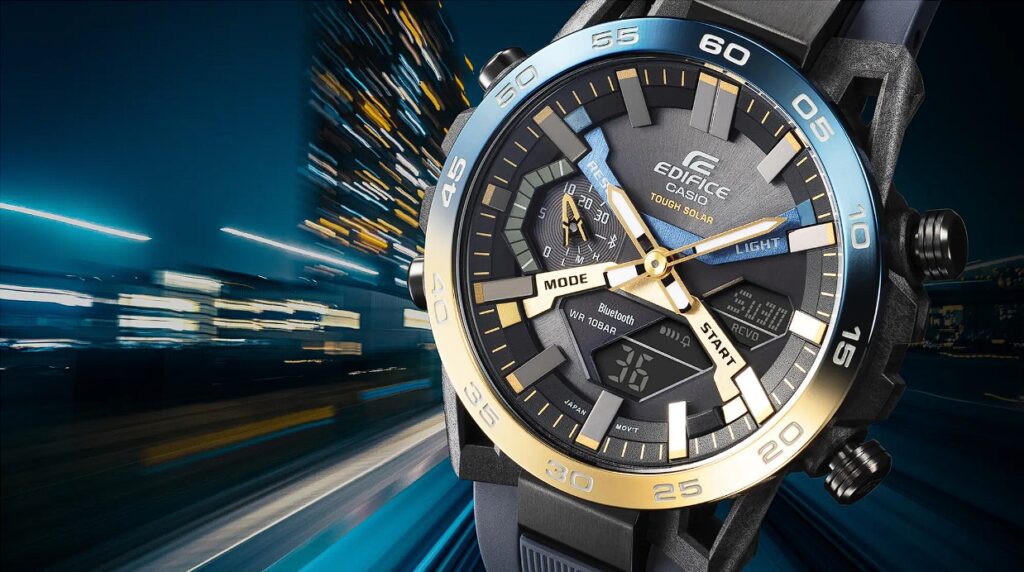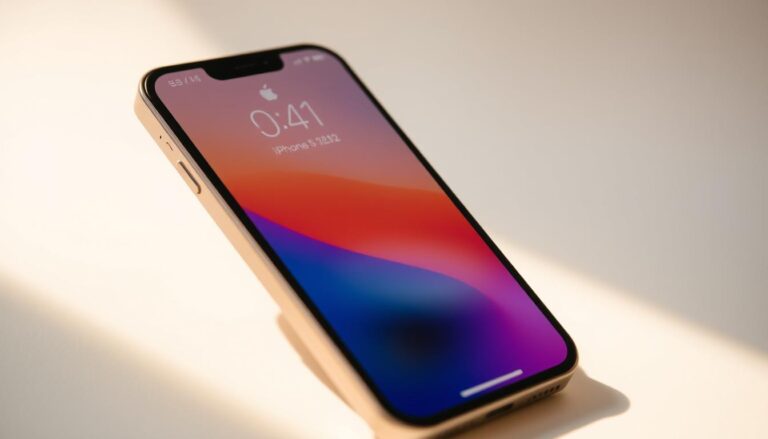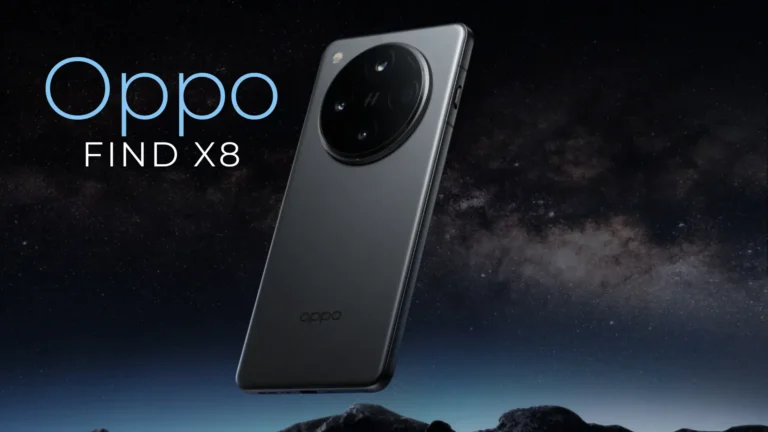Introduction

Casio solar watch technology began at the turn of the 20th century, marking an important milestone in the company’s history of innovation. Casio’s first solar-powered watch was the G-Shock Rangeman DW-9300, introduced in 1998. This model laid the foundation for the now widely recognized Tough Solar feature, which is integral to many of Casio’s solar watches.
The Technology Behind Casio Solar Watches:
Casio Solar watch use a technology called Tough Solar. This innovative system is designed to convert light from a variety of sources, including weak light from fluorescent lamps, into enough energy to power the watch. This is how it works:
- Solar cells: Integrated into the dial of the watch, these cells absorb light from any source, be it sunlight or artificial light from bulbs.
- Energy Conversion: The absorbed light is then converted into electrical energy.
- Energy Storage: This energy is stored in a rechargeable lithium-ion battery within the watch.
- Power usage: Stored energy is used to operate the watch’s functions smoothly, including timekeeping, radio wave reception, Bluetooth connectivity, alarm, and lighting.
- Eco-Friendly: Solar watches use renewable energy, reducing reliance on disposable batteries and reducing waste.
- Convenience: They eliminate the hassle of regular battery replacement, providing uninterrupted timekeeping.
- Charging Flexibility: Solar watches can be charged via any light source, not just sunlight, including incandescent or fluorescent bulbs.
- Longevity: Known for their durability, solar watches can go for several months without exposure to light due to their power-saving mode.
- Cost-effectiveness: They are often cheaper in the long run because they do not require battery replacement and have less complex mechanisms.
- Reliability: Solar watches are reliable and accurate timekeepers.
These benefits make solar-powered watches an attractive option for those seeking stability, convenience, and long-lasting performance.
The Edifice and G-Shock Series:
The Edifice and G-Shock series are Casio’s two flagship collections of solar-powered watches, each catering to different lifestyles and preferences.

The Edifice Series: The Edifice series is designed for the professionally minded individual. These watches are known for their attractive designs and advanced features. These include solar power, world time, stopwatch function, and water resistance.
The design is generally more sophisticated and elegant, making them suitable for business settings as well as casual wear.

G-Shock Series: G-Shock watches are built for durability and strength. They are ideal for sports, outdoor activities and military use. These watches are shock-resistant, water-resistant, and come with a number of features like countdown timer, alarm, and world time.
The G-Shock Solar watches are also equipped with Casio’s Tough Solar technology, which ensures that even the smallest amount of light can run the watch efficiently.
They have a more courageous and tough appearance, reflecting their ability to withstand harsh conditions.
A Commitment to Sustainability:
Casio’s commitment to sustainability through their solar watches is a reflection of their dedication to eco-friendly innovation and responsible manufacturing. Here’s what’s included:
Eco-Friendly Technology:
Casio solar watches use solar cells to convert light into energy, significantly reducing the need for battery replacement. This technology uses renewable energy, a clean alternative to traditional battery power that relies on chemical processes.
Reduction of Waste:
By eliminating the need for frequent battery replacement, Casio solar watches help reduce the environmental impact associated with battery disposal. Batteries contain chemicals that can be harmful to the environment and solar technology helps reduce this waste.
Longevity and Durability:
Solar watches are designed to last a long time thanks to durable solar cells and rechargeable batteries. This means fewer watches are thrown away, and the longer lifespan of each watch contributes to a reduction in consumer waste.
Promoting Environmental Awareness:
Casio’s initiative serves as an educational tool by promoting awareness of renewable energy and sustainability. Users of Casio solar watches become advocates for the environment, as their choice of watch reflects a commitment to eco-friendly practices.
Aligning with Global Sustainability Goals:
Casio’s efforts are in line with global sustainability goals aimed at reducing carbon footprint and promoting the use of renewable energy sources. By integrating solar technology into its products, Casio is taking a step toward a more sustainable future.
Conclusion:
Casio Solar watch represents an important step towards the integration of environmentally sustainable technology into everyday consumer products. These watches are not only a testament to Casio’s innovative spirit, but also reflect its broader commitment to environmental responsibility and sustainable living. The Edifice and G-Shock series demonstrate the versatility of solar technology, providing options for both professionals and outdoor enthusiasts.
You may visit Sci-Fi Spectra for more related posts.
Frequently Asked Questions
Casio solar watches are built to last and are said to supports its power with light through the solar charging system that lasts from 6 to 12 months of usage of a fully charged battery. It will take a certain amount of time to charge the battery based on the model and usage conditions. For instance, watches with refined sun abilities like the Casio G-Shock series can include boosted power storage. In general, if the watch is kept in front of ample sources of light frequently, charge can be long-lasting considerably. It is advised to put the watch at a place where there is access to light most of the time, and you also need to take a break from wearing the watch for some time and keep it in the sunlight to charge it.
Yes, Casio solar watches have a battery, but it is the rechargeable type of battery. Unlike normal watches that comes with non rechargeable batteries, Casio solar watches are come with rechargeable battery that is charged through light. This is a rechargeable battery that is used to store the energy which is collected from the sun light or any artificial light source so that the watch is operational even when it is not under any source of light. The battery may however degrade over time and is typically expected to last for years before having to be replaced.
Casio watch Duro MDV106-1A is the Casio model that Gates had been wearing for quite some time and is known for his fondness of Casio watches. This model was famous for being strong, easy to use, and cheap. The Casio Duro is one of the best models among the watches which are liked by the watch freaks because of the durability along with the features of the stainless steel body and the water resistance up to 200 meters. This choice seems to reflect Gates’ sensible view of the importance of time, considering an elegant watch more important than a luxury glimpse.
Solar watches from Casio work through a complex system whereby light is transformed into electricity. In most models, they come with a small solar panel, normally found at the base of the watch face, which draws power from ambient or artificial light. This light is then converted to electrical energy by this cell known as photovoltaic cell. The generated electricity is used to charge a rechargeable battery that is installed within the watch. Power is provided by the battery to drive the movement and functions of the watch. With Casio’s solar technology, the watch lasts longer with the least frequency of replacing batteries by yourself.
The process of charging a Casio solar watch is very simple and it does not need other tools. They only require you to put the watch under a source of light like direct natural or artificial sunlight. The thin solar panel found at the backside of the watch face will be used to capture the light and transform it to electrical energy. To charge efficiently the watch should be left for several hours under direct sunlight or under a powerful source of light. It is recommended to expose light sources as often as possible to keep the battery charged to prevent the light from going off constantly.
The durability of every solar watch depends on some factors like the quality of the solar system, the usage of the watch, and proper maintenance. Usually, if a solar watch has been well taken care of, it can last up to 10-20 years or even more. Charges for a solar watch are made to last for many charges and if properly taken care of, the life span of this watch is really strong. However, the battery of the watch may drain, or rather lose its efficiency after some time, while the watch as an entity will still work efficiently if appropriately cared for.
Plug-in watches are very recommended for their durability, easy to maintain, and most importantly, eco-friendly by using solar power. They have several benefits over the battery-operated watches. undefined
• Eco-friendly: This is because they limit the use of disposable batteries thereby enhancing environmental conservation.
• Low Maintenance: Since it uses a rechargeable battery instead of disposable ones, there is no constant need to replace the batteries.
• Long-term Savings: It also noted that solar watches might be cheaper in the long run because people do not have to replace batteries often.
• Reliability: They are typically highly precise and reliable with newer and more sophisticated models having other features like atomic timekeeping.
Some of the uses of a solar watch include, the time taken to recharge the watch fully depends on the type of watch and the luminosity of the light used. It may take anything from 6 to 8 hours of direct sunlight to charge a solar watch from a dead state. If artificial light is used, it may take a longer time for the egg to be ready for fertilization. It must be noted though that Casio had released many of its solar watches to be charged even in low light conditions, thus, to ensure that the watch operate at its full potential, it is to be exposed to light often.
Some of the uses of a solar watch include, the time taken to recharge the watch fully depends on the type of watch and the luminosity of the light used. It may take anything from 6 to 8 hours of direct sunlight to charge a solar watch from a dead state. If artificial light is used, it may take a longer time for the egg to be ready for fertilization. It must be noted though that Casio had released many of its solar watches to be charged even in low light conditions, thus, to ensure that the watch operate at its full potential, it is to be exposed to light often.
The batteries used in solar watches are rechargeable and long-lasting but can be replaced after many years of usage. The battery has a life expectancy of about 10 to 15 years depending on the battery type and usage. As it reaches the end of its useful life, it may not be able to keep a charge for as long and you will require to get a new battery. In case the battery capacity of the Kmart special occasion watch is low and cannot hold a charge properly, it has to be charged by a technician for further use.
The Casio watch battery has a life expectancy of 2 to 5 years, depending on the model and the type of battery used. For the more conventional quartz watches, the battery is said to last a minimum of one to two years. But for watches that are under the solar powered Casio watches, the features that it possesses as the rechargeable battery has a longer life span ranging from 10 to 15 years. Proper usage, careful charging, and maintenance can go a long way in preserving the battery and making it functional as long as intended.





